Understanding the Power of ABA in Educational Settings
Applied Behavior Analysis (ABA) has emerged as a highly effective, evidence-based intervention for supporting children with ADHD in classroom environments. Its principles and techniques are tailored to address core symptoms such as inattention, hyperactivity, and impulsivity, providing educators and parents with practical tools to enhance student outcomes. This article explores how ABA therapy supports academic and behavioral success, delving into its foundational concepts, strategies used in schools, and methods for effective implementation.
Core Principles and Techniques of ABA for Students with ADHD
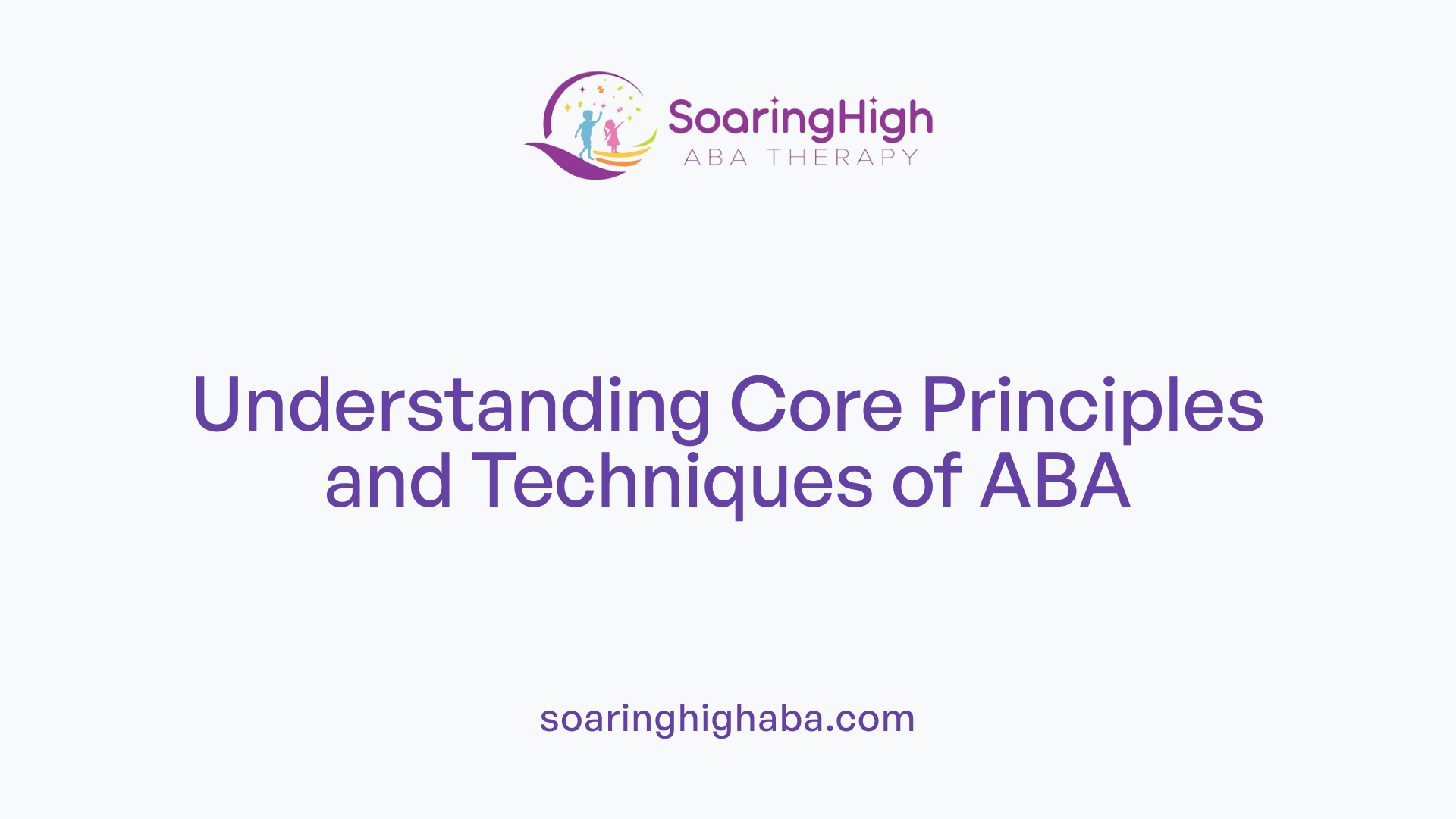
What are the principles, techniques, and methods of ABA therapy used for students with ADHD?
Applied Behavior Analysis (ABA) is a structured approach based on the principles of operant conditioning. It emphasizes that behavior is shaped and maintained by environmental factors, especially rewards and consequences.
Key techniques include positive reinforcement, which involves rewarding desired behaviors to encourage their repetition, and token economies, where tokens serve as symbols exchanged for preferred rewards. Behavioral contracting and self-monitoring help students take responsibility for their actions, while task analysis breaks complex skills into manageable steps.
Visual schedules and response cost strategies are used to promote organization and self-control. Differential reinforcement involves reinforcing specific behaviors while withholding reinforcement from less desirable behaviors, promoting skill development.
Self-management training teaches students to regulate their own behaviors through goal setting, self-rewards, and increased awareness.
These techniques are complemented by environmental modifications, like structured routines and movement breaks, alongside social skills training that encourages positive peer interactions.
Behavioral assessments and functional analysis form the backbone of individualized treatment plans. These assessments identify the triggers and functions of challenging behaviors, helping tailor interventions to each child's unique needs.
In an integrated treatment model, ABA strategies are combined with medication when appropriate, and involve active collaboration with parents and school staff.
When applied correctly, these methods have strong scientific backing, with evidence supporting their effectiveness in improving attention, reducing impulsivity, and fostering adaptive skills in children with ADHD.
Applying ABA in Classroom Environments
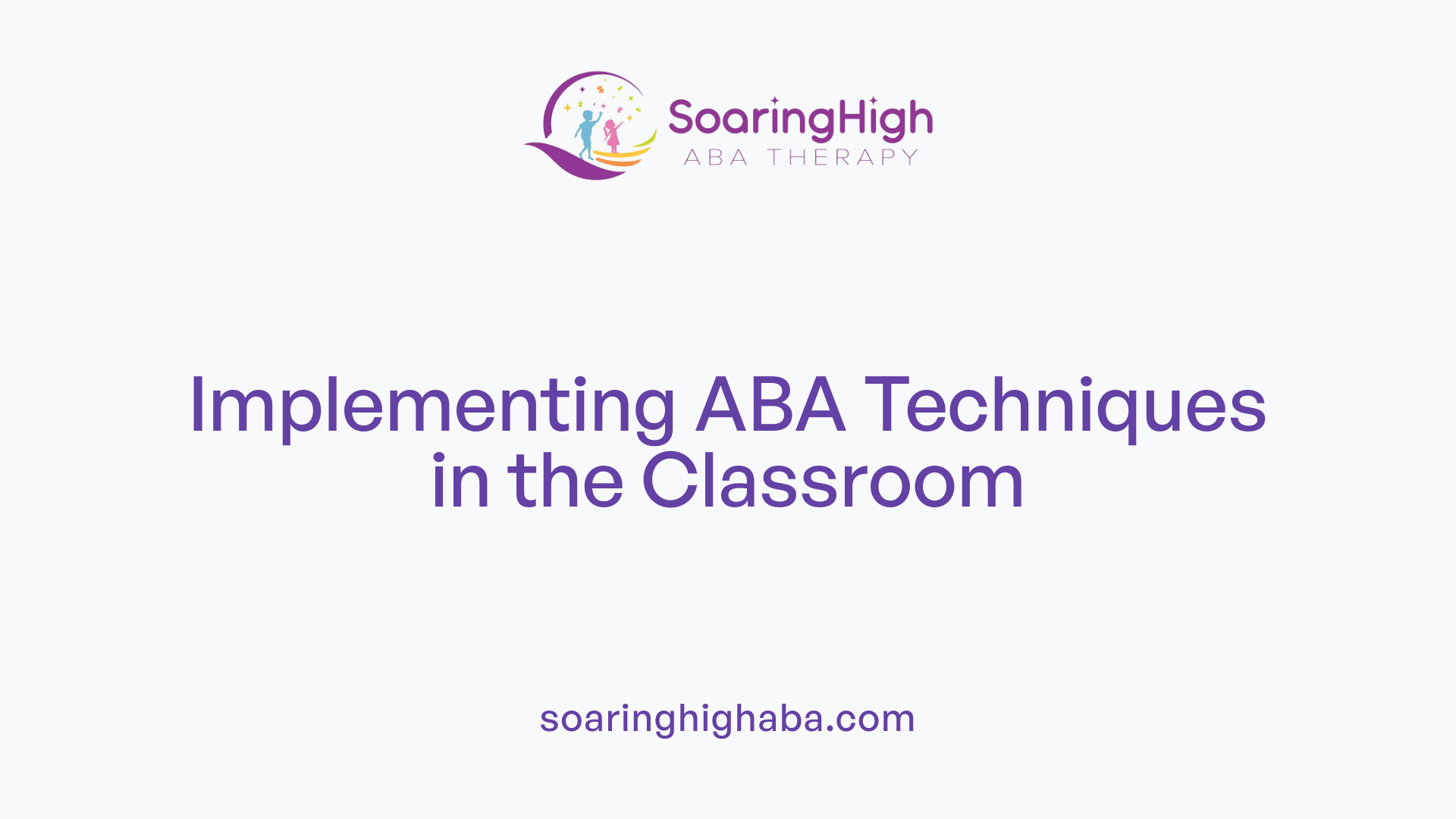
How is ABA applied in school environments for children with attention-related challenges?
ABA, or Applied Behavior Analysis, is widely used in classrooms to support children with attention difficulties, such as ADHD. The approach involves creating structured routines that provide predictability, helping children know what to expect and reducing anxiety about transitions.
Visual supports, like visual schedules and cues, play a crucial role. These tools help children understand daily tasks, stay organized, and remain focused on activities. For example, a visual timetable can outline the day’s lessons, encouraging independent task completion.
Reinforcement strategies are central to ABA in education. Token economy systems, where children earn tokens for positive behaviors, can be exchanged for rewards, motivating children to stay attentive and compliant. Immediate positive feedback, such as praise or rewards, reinforces desired behaviors effectively.
Environmental modifications also support children’s attention and self-regulation. These include seating arrangements that reduce distractions, designated quiet areas for breaks, and visual boundary markers for activities.
Behavioral assessments, especially functional behavior assessments (FBAs), help tailor interventions to each child's needs. These assessments identify triggers and environmental factors influencing problem behaviors. Based on this information, teachers and therapists develop individualized plans focused on reinforcing appropriate behaviors and modifying the environment to minimize triggers.
In addition to these strategies, ABA classroom programs often incorporate social skills training, organizational skill development, and self-monitoring techniques. These interventions help children with ADHD improve their academic performance, regulate emotions, and develop lasting behavioral habits.
Utilizing data to monitor progress ensures that strategies remain effective and are adjusted as needed. Overall, ABA creates a structured, supportive classroom environment that promotes learning and positive behavior for children with attention challenges.
Supporting Families and Educators through ABA Strategies
What are functional behavior assessments and behavior intervention plans?
Functional Behavior Assessments (FBAs) are essential tools used by Board Certified Behavior Analysts (BCBAs) to understand the underlying reasons for a child's disruptive or challenging behaviors. By analyzing antecedents and consequences that maintain problematic behaviors, therapists can develop tailored Behavior Intervention Plans (BIPs). These plans specify individualized strategies to teach replacement behaviors and modify environmental variables, helping children with ADHD succeed across various settings.
How can collaboration between therapists, teachers, and parents be fostered?
Effective support for children with ADHD requires a team approach. Therapists work closely with teachers and parents to share insights from assessments and data collection. This collaboration ensures consistency in implementing behavior strategies at home and school, promoting generalization of skills. Regular communication, joint goal setting, and progress monitoring enable all parties to adapt interventions as the child develops.
What are behavior management techniques and parent training?
Behavior management techniques form the foundation of ABA therapy. These include positive reinforcement, token economy systems, visual aids, and structured routines. Parent training in behavior modification equips caregivers with skills to reinforce desired behaviors and reduce problem behaviors effectively. Training sessions typically involve teaching psychoeducation, contingency management, and how to set realistic goals, thus empowering parents to continue intervention strategies at home.
How can consistent routines and reinforcement be implemented across different environments?
Creating predictable routines and applying reinforcement consistently across settings enhances learning and behavior management. For example, visual schedules can outline daily activities at home and school, providing clarity and reducing anxiety. Immediate positive reinforcement, like praise or tokens, should be matched with specific behaviors to encourage repetition. Cross-setting consistency, supported by collaboration with therapists and teachers, assures that children with ADHD receive clear, reinforcing signals and structured environments, leading to improved self-control and organization.
Supporting children with ADHD through structured ABA strategies
Implementing ABA strategies such as discrete trial training, naturalistic teaching, and pivotal response treatment within daily routines helps children develop social, behavioral, and organizational skills. When caregivers, teachers, and therapists work synergistically, children are better equipped to manage impulses, sustain attention, and build confidence. This comprehensive approach fosters sustainable progress, improving both academic performance and social interactions.
| Technique | Application Area | Description |
|---|---|---|
| Functional Behavior Assessment | Planning and diagnosis | Identifies triggers and functions of behaviors |
| Token Economy System | Motivation and reinforcement | Uses tokens or symbols for earning rewards |
| Visual Schedules | Routine establishment | Promotes predictability and independence |
| Self-Monitoring Tools | Skill development | Encourages children to track and regulate their behaviors |
| Parent and Teacher Training | Consistency in implementation | Ensures strategies are applied uniformly across settings |
Enhancing Outcomes with Evidence-Based Strategies
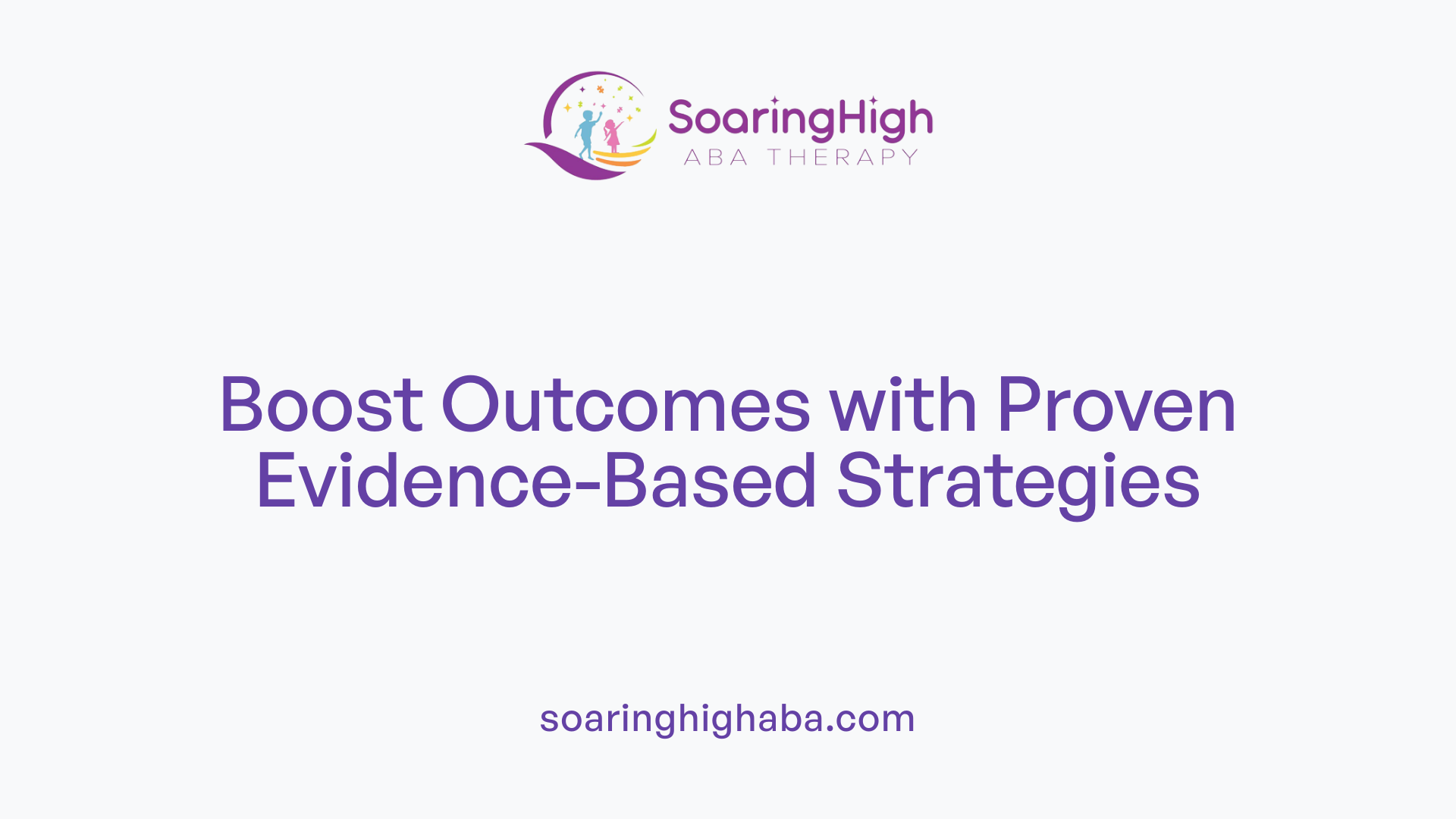 Research evidence from multiple studies backs up the effectiveness of ABA therapy for children with ADHD. Large-scale randomized clinical trials, systematic reviews, and meta-analyses have consistently shown substantial improvements in children’s behavioral and functional skills. For example, studies report effect sizes around 0.83, indicating significant gains in compliance, reduction of ADHD symptoms, and increased academic productivity.
Research evidence from multiple studies backs up the effectiveness of ABA therapy for children with ADHD. Large-scale randomized clinical trials, systematic reviews, and meta-analyses have consistently shown substantial improvements in children’s behavioral and functional skills. For example, studies report effect sizes around 0.83, indicating significant gains in compliance, reduction of ADHD symptoms, and increased academic productivity.
Behavioral management treatments, including ABA, are recognized as well-established, evidence-based modalities. They effectively enhance attention, reduce impulsivity, and support self-regulation by teaching children appropriate behaviors and social skills. Techniques such as differential reinforcement and discrete trial training help manage problem behaviors and promote positive habits.
When ABA therapy is combined with medication, research indicates that children experience broader and more sustained benefits. This multimodal approach addresses core symptoms and functional impairments comprehensively. Interventions that are tailored to the child's environment—home, school, and community—show strong support for improving everyday skills.
The weight of scientific evidence affirms ABA as a reliable, effective intervention for children with ADHD. Its strategies, grounded in rigorous research, can bring about meaningful and lasting behavioral improvements, helping children reach their full potential and succeed across multiple settings.
Behavioral Strategies for Managing ADHD Symptoms
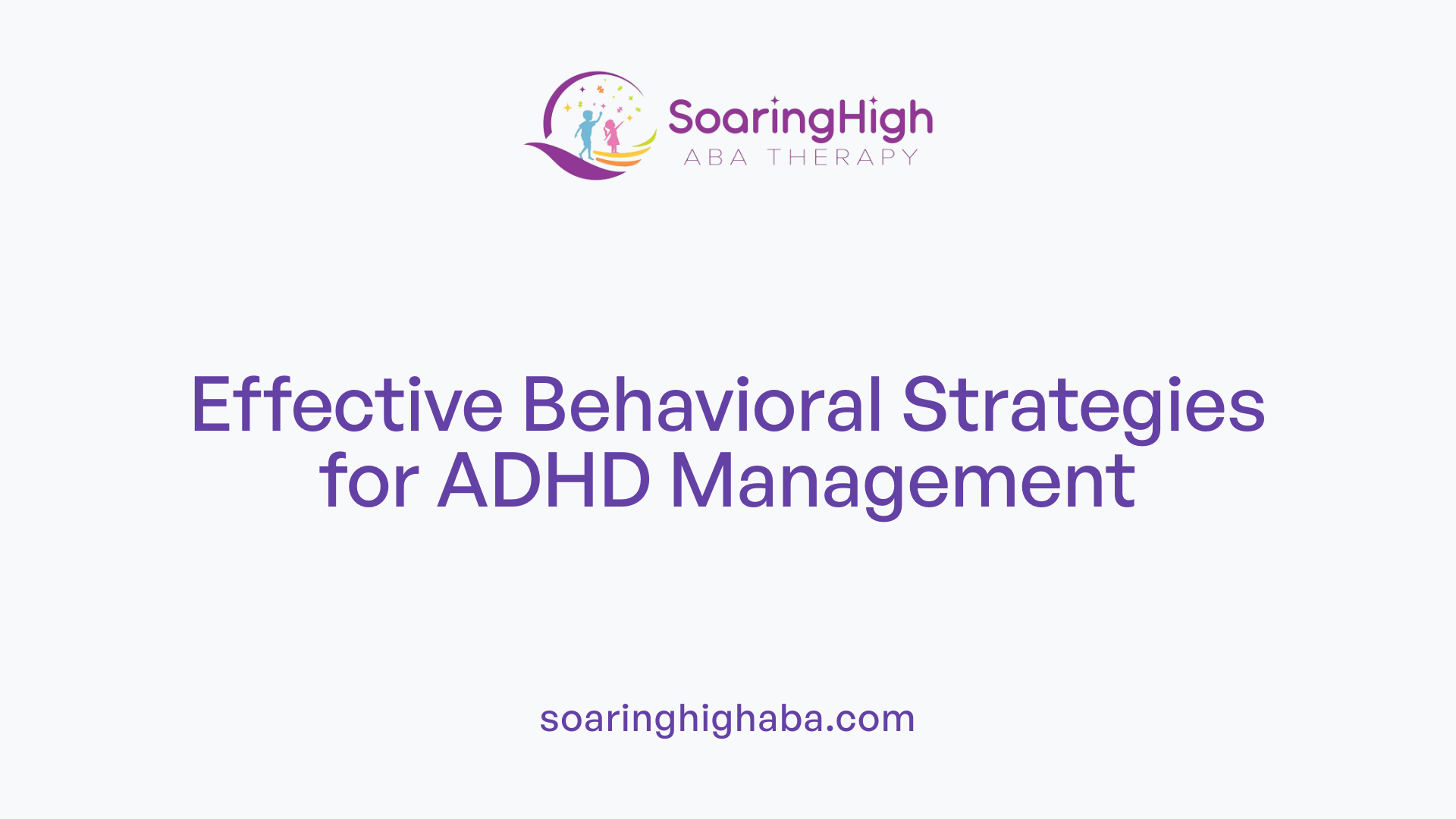
What behavioral intervention strategies are effective for managing ADHD symptoms in students?
Managing ADHD symptoms in children and adolescents often involves specific behavioral approaches that support improved behavior and focus. Among these, parent training programs such as Parent-Child Interaction Therapy (PCIT) and Parent Management Training (PMT) stand out as effective. These programs teach parents positive reinforcement techniques, consistent responses, and praise to shape desirable behaviors and reduce disruptions.
School-based strategies are equally crucial. Tools like the Daily Report Card set clear behavior goals, providing regular feedback and reinforcing positive actions. These systems motivate children to meet expectations and improve classroom conduct, especially for children up to age 12.
Developing organizational and self-management skills is another vital area of intervention. Using checklists, planners, visual aids, and explicit instructions helps children better manage their tasks and responsibilities. These tools strengthen executive functions such as planning, organization, and self-monitoring.
Creating structured routines and incorporating visual cues can significantly support attention span and impulse control. Clear expectations, consistent rules, and visual supports like schedules or timers help children predict what comes next and reduce anxiety and impulsivity.
While behavioral treatments primarily target improving daily functioning, they do not directly address the core cognitive symptoms of ADHD. However, when combined with medication or other therapies, they provide a comprehensive approach that has strong support from research and clinical practice.
Research and Evidence Supporting ABA for ADHD Outcomes
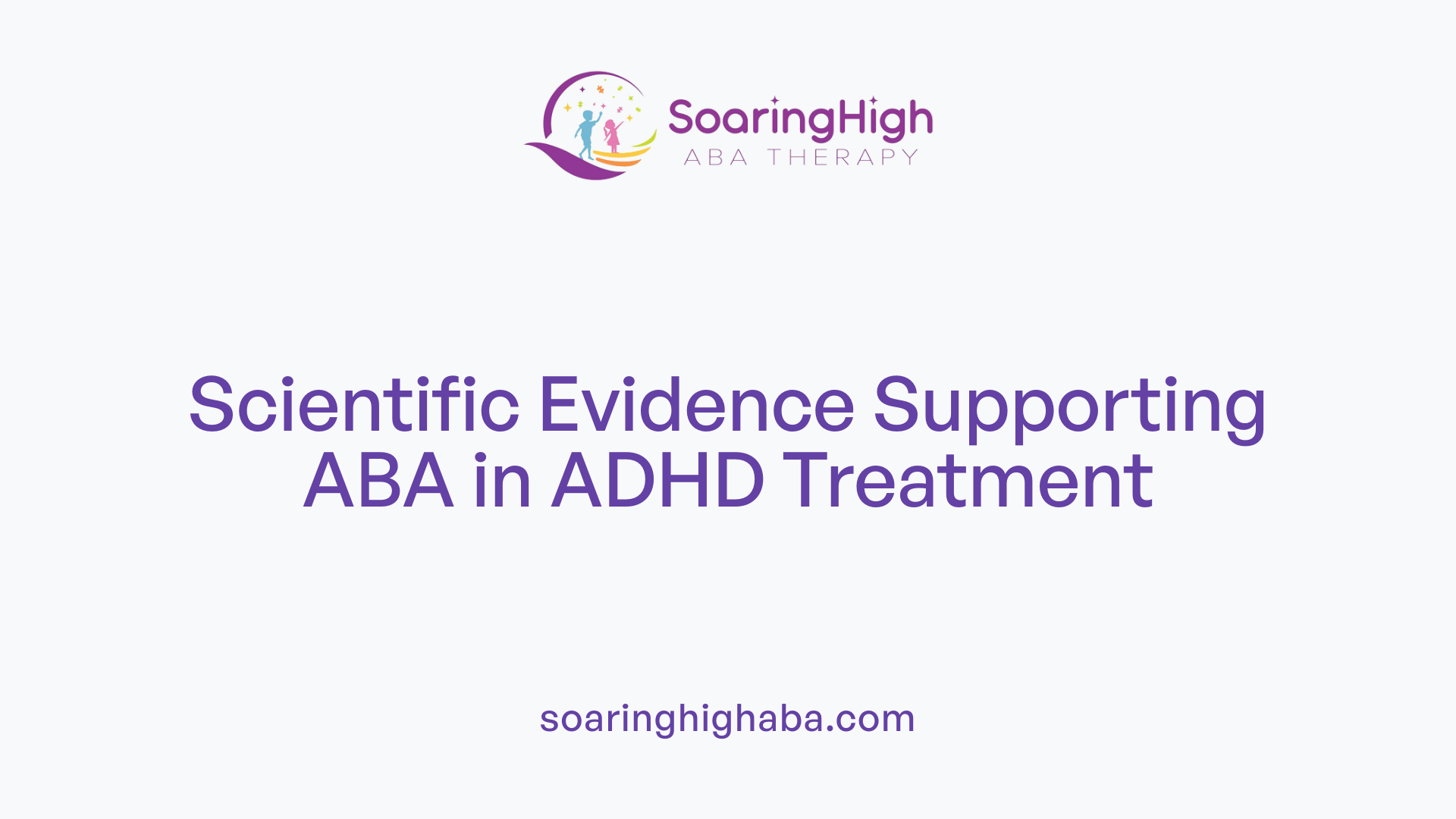 There is strong research backing the effectiveness of Applied Behavior Analysis (ABA) in treating children with ADHD. Numerous randomized clinical trials, systematic reviews, and meta-analyses have reported large effect sizes, such as an effect size of 0.83, indicating significant improvements in several areas including compliance, behavioral challenges, and academic productivity.
There is strong research backing the effectiveness of Applied Behavior Analysis (ABA) in treating children with ADHD. Numerous randomized clinical trials, systematic reviews, and meta-analyses have reported large effect sizes, such as an effect size of 0.83, indicating significant improvements in several areas including compliance, behavioral challenges, and academic productivity.
Behavioral management treatments like ABA are classified as well-established, evidence-based interventions. They work by enhancing attention, reducing impulsivity, and fostering self-regulation skills in children. These strategies often include techniques such as differential reinforcement and discrete trial training, which are effective in managing problematic behaviors while promoting social skills, language development, and daily functioning.
Research shows that when ABA is combined with medication, the outcomes are even more comprehensive. This integrated approach can address core ADHD symptoms such as inattention, hyperactivity, and impulsivity more effectively than either treatment alone.
Studies also highlight that ABA interventions are adaptable across various settings like home and school, providing structured routines and reinforcement strategies that help children develop positive habits and improve their overall functioning. The consistency and rigor of these approaches are crucial for durable progress.
In summary, the wealth of empirical evidence confirms that ABA not only manages disruptive behaviors but also supports skill development and social integration in children with ADHD, making it a highly effective part of a comprehensive treatment plan.
Embracing ABA for Lasting Classroom Change
Integrating ABA therapy into classroom management and parental support strategies offers a promising pathway for children with ADHD to develop essential behavioral, social, and academic skills. With its solid foundation in empirical research and its adaptable, individualized approach, ABA empowers educators and families to foster positive change, reduce disruptive behaviors, and enhance children's overall well-being. As part of a comprehensive treatment plan that includes medication, social skills training, and environmental adjustments, ABA paves the way for more inclusive, productive learning environments where children with ADHD can thrive and reach their full potential.
References
- ABA Therapy for ADHD Treatment - Manhattan Psychology Group
- Can ABA Be Used for ADHD or Classroom Behavior | Ab Spectrum
- Behavior Management for School Aged Children with ADHD - PMC
- ABA Therapy for ADHD: Strategies to Improve Focus & Behavior
- ABA Therapy for ADHD: Effective Strategies for Kids
- Parent Training in Behavior Management for ADHD - CDC
- Top Benefits of ABA Therapy for ADHD
- How to Use ABA in the Classroom
- ABA Therapy for ADHD/ADD - Award Behavioral Health
- ABA therapy for ADHD Treatment: Techniques & Examples - Mentalyc





































































































